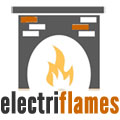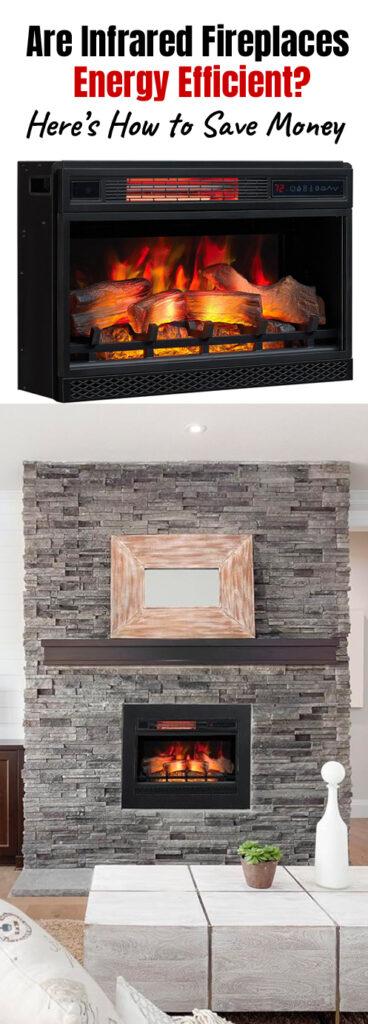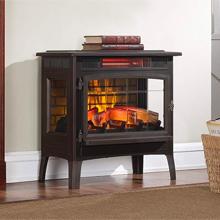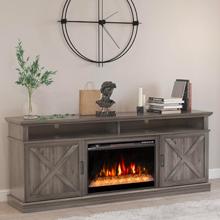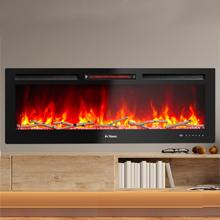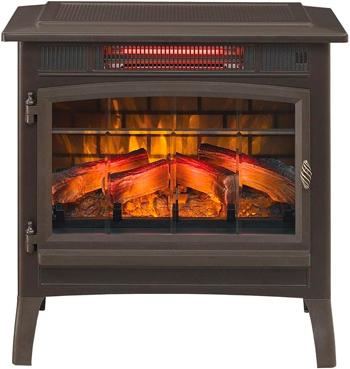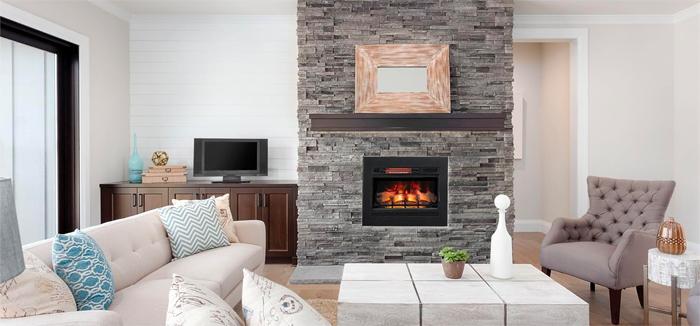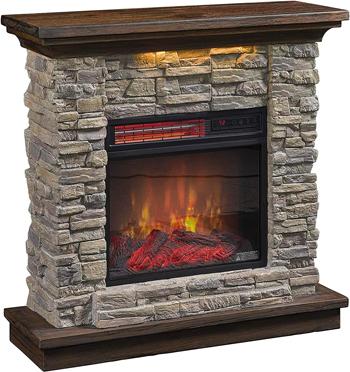Before you invest in an infrared fireplace, let’s find out if they’re actually energy efficient – and how you can save money…
Efficiency of Infrared Fireplaces VS Fan Blower Electric Fireplaces:
Infrared electric fireplaces are often considered more efficient than traditional electric fireplaces using fan-forced heating. Infrared efficiency is attributed to the process in which they generate and distribute heat. Here’s why infrared fireboxes operate more proficiently:
1. Direct Heat Transfer: Infrared heaters emit infrared radiation, which warms objects and people directly in its path, similar to the way the sun warms the Earth. This method of heat transfer is more fuel-efficient because it doesn’t rely on heating the air in the room first.
2. No Heat Loss Through Air Movement: Traditional electric fireboxes with fan-forced heating rely on blowing hot air into the room. Consequently, heat is lost as the warm air moves away from the fireplace. In contrast, infrared heaters don’t rely on pushing air, minimizing heat loss.
3. Quick Heating: Infrared heaters tend to heat up fast and can supply warmth almost instantly. This is in contrast to some traditional electric fireplaces, which may take a bit longer to warm up a room.
4. Zonal Heating: Infrared heaters allow for more targeted or zonal heating. They focus on heating specific areas or objects, providing warmth where it’s needed most. Localized heating can be more energy-efficient than warming an entire room uniformly.
5. Energy Conservation: Since infrared heaters can warm objects directly, they often allow people to feel cozy at lower thermostat settings. Thus, you can enjoy energy savings, since localized heat doesn’t require the entire room to be raised to a higher temp.
NOTE: The efficiency of any electric heater, including infrared models, can also be influenced by insulation and room largeness. Plus, specific benefits can vary among different models and brands.
Infrared Fireplaces: What Makes Them Energy Efficient?
Infrared fireplaces are at the forefront of energy efficiency. These modern radiators utilize advanced infrared technology to provide effective and budget-friendly heating.
The Superiority of Infrared Technology
- Targeted Heat Distribution: Infrared fireplaces emit radiant heat directly onto objects and people, avoiding wasted energy.
- Even Heat Distribution: Infrared can effectively warm larger areas with less power consumption.
- Customizable Settings: Adjustable temperature settings and built-in thermostats optimize energy usage.
Infrared Fireplace Cost Savings VS Gas or Wood-Burning Hearths:
The cost of heating a room depends on the energy source, local utility rates and the efficiency of the heating appliance. Let’s compare the costs of heating a 400 square foot room using a 1500-watt electric fireplace heater, a gas hearth and a wood-burning firebox. Keep in mind that I’m laying out general estimates, and actual costs can vary.
- Electric Fireplace Heater (1500 watts):
- Energy Consumption: 1.5 kWIf used continuously for one hour, it consumes 1.5 kWh (kilowatt-hour).To calculate the cost, multiply the energy consumption by the local electricity rate per kWh.
- Gas Fireplace:
- Gas operated units typically use natural gas or propane.
- Although sometimes cheaper to run, the cost depends on the local gas rate and the fireplace’s efficiency.
- Wood-Burning Fireplace:
- Wood-burning hearths require purchasing or chopping wood, which adds to the overall cost.
- The cost of wood can fluctuate based on location and wood species.
- Some heat may be lost through the chimney.
NOTE: Keep in mind that electric heaters are generally considered 100% efficient in converting electricity to heat. Conversely, gas and wood-burning fireplaces may have lower efficiency ratings.
To get a more accurate calculation for your specific utility bill, research:
- Local utility rates for electricity and gas.
- The efficiency rating of the gas fireplace.
- Cost and availability of logs for the wood-burning fireplace.
It’s also worth noting that electric fireplaces provide zonal heating, allowing you to heat specific areas, while traditional fireplaces might heat the entire area. As such, the actual savings depend on usage habits and preferences.
Types of Electric Fireplace Heaters:
- Wall-Mounted Fireplaces: These sleek units create an elegant focal point on your wall.
- Freestanding Fireplaces: Standalone units that can sit almost anywhere in your home. For example, you can get a pre-built mantel surround, a firebox in a cabinet or one that looks like a wood-burning stove.
- Fireplace Inserts: Designed to fit seamlessly into existing hearth openings. Also see: How to convert a wood burning fireplace to electric.
Choosing the Best Infrared Electric Fireplace:
Here are some key components that can influence the efficiency of one infrared electric fireplace over another:
1. Infrared Heating Technology:
The quality and design of the infrared heating elements play a significant role in efficiency. Quartz and ceramic are standard heating elements in infrared heaters, each with unique attributes.
Quartz:
- Characteristics: Heats quickly, emits intense infrared radiation absorbed by objects.
- Advantages: Quick warm-up, efficient radiation, suitable for spot heating.
- Considerations: Can be fragile and sensitive to impact.
Ceramic:
- Characteristics: Durable, even radiation, operates at lower temperatures.
- Advantages: Resistant to damage, provides consistent heat distribution.
- Considerations: Slightly longer to reach peak temperature.
Efficiency:
- Both Effective: Efficiency depends on design, construction, and use.
- Quick Heat: Quartz for rapid warmth.
- Even Heat: Ceramic for broad, consistent distribution.
- Durability: Ceramic for resistance to damage.
2. Heating Capacity:
The ability of the infrared fireplace to generate adequate heat for a particular space is crucial. Look for a model that matches the heating capacity with the room size you’ll heat. (aka Don’t buy a heater too small for your space.)
3. Timer and Programmable Features:
Fireplaces equipped with configurable settings enable you to dictate when the unit engages and at what temperature. As a result, you can optimize energy usage by operating the fireplace only when necessary.
4. Energy-Saving Modes:
Some infrared fireplaces come with energy-saving modes (ie. 750 and 1500 watt levels). So, adjust the heating intensity based on current temp or the set preferences. This can contribute to overall energy efficiency.
High Quality Fireplace Brands:
Transitioning to an Infrared Fireplace:
If you want to switch to an infrared fireplace, follow these steps:
- Assess your current setup and determine if any modifications are needed.
- Select your favorite model based on size, design and additional features.
- Follow the manufacturer’s guidelines for recommended placement and wiring connections.
Save Money Now: Start lowering your heating bill today. Electric fireplaces are simple to assemble and not expensive to install. You can enjoy efficient heat when you need it without having to empty your bank account.
